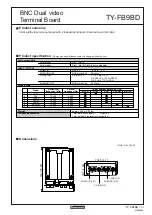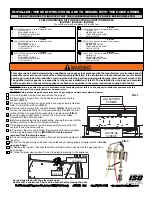
Chapter 4 - Operation and Administration
WILINK I MODULAR BASE STATION SYSTEM MANUAL
92
4.7.4.5
Admin Status
The transmit on/off status of the ODU.
The default option is Disabled.
4.7.5
Frequency Bands File and Frequency Bands
Groups
The Frequency Bands Configuration file defines the characteristics of each of the
frequency bands supported by the system. These characteristics include:
Lowest Downlink Frequency
Highest Downlink Frequency
Step (resolution)
Duplex Separation: the difference between downlink (Tx) and uplink (Rx)
frequencies.
Group ID: For certain bands, the relevant SU may use a frequency band that
includes more than one of the discrete bands available for the ODU. The
Group ID defines the Frequency Bands Group, which includes frequency
bands that can be used by SUs served by the ODU using the selected band.
The Frequency Bands Group defines also the range of frequencies that can be
used by the relevant AU.
In the current release, the following Frequency Bands are supported:
Table 4-3: Frequency Bands
Frequency Band
Group (ID)
Downlink Frequency Range
Duplex Separation
3.3e
3.3GHz (2)
3316-3335 MHz
50 MHz
3.3f
3.3GHz (2)
3331-3350 MHz
50 MHz
3.3g
3.3GHz g (3)
3376-3400 MHz
-76 MHz
3.5a
3.5GHz (1)
3499.5-3553.5 MHz
-100 MHz
3.5b
3.5GHz (1)
3550-3600 MHz
-100 MHz
3.6a
3.6GHz (4)
3700-3753.5 MHz
-100 MHz
3.6b
3.6GHz (4)
3746.5-3800 MHz
-100 MHz
This mechanism allows adding new frequency bands without modifying the
software by simply loading a new Frequency Bands File when the supporting
















































